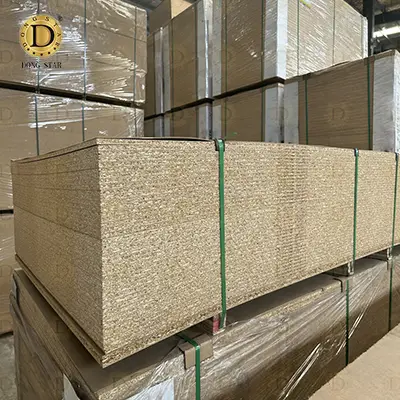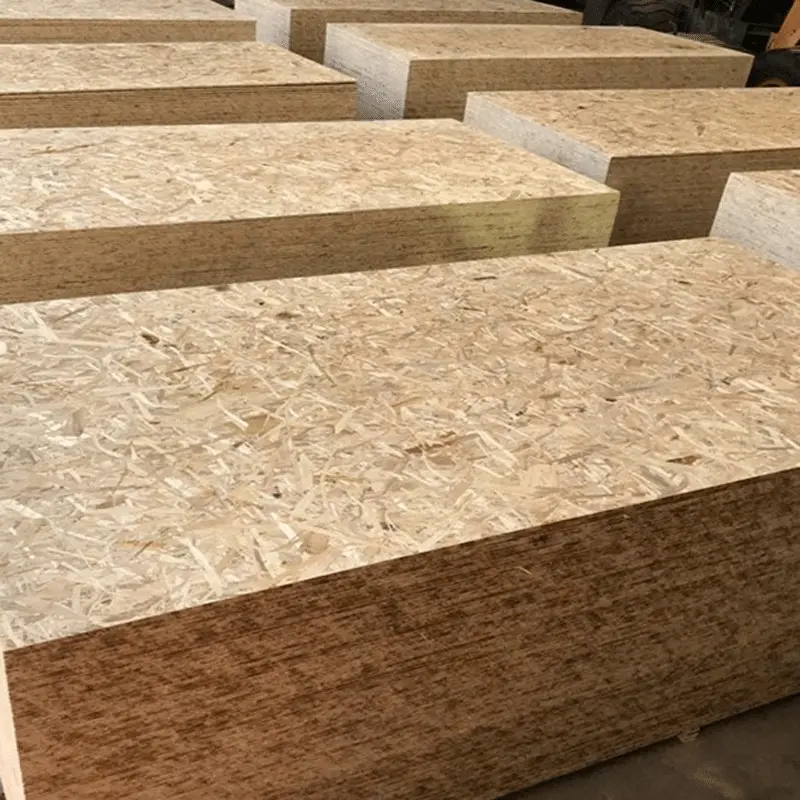When choosing engineered wood for your project, understanding the differences between Particle Board, MDF (Medium Density Fiberboard), and OSB (Oriented Strand Board) is crucial. Each has unique properties, advantages, and ideal applications. This guide breaks down their composition, performance, and best uses to help you make an informed decision, whether you’re building furniture or working on a construction project.
Composition and Manufacturing Processes
Particle Board: The Economical Choice
Particle board, also known as chipboard, is made by compressing wood chips, sawdust, and shavings with synthetic resin adhesives (like urea-formaldehyde) under heat and pressure. This results in a relatively smooth and uniform panel. Its raw materials are often wood residues, making it a cost-effective and environmentally friendly option by utilizing waste products. However, it generally requires laminates or veneers for a finished appearance as its surface is not as smooth as MDF’s.

MDF: Smoothness and Versatility
Medium Density Fiberboard (MDF) is manufactured by breaking down hardwood or softwood residuals into wood fibers through a thermomechanical process. These fibers are then combined with wax and a resin binder (commonly urea-formaldehyde, though low-formaldehyde options are increasing), and formed into panels by applying high temperature and pressure. This process creates a dense, flat, and homogeneous board with no wood grain. Its incredibly smooth surface makes it ideal for painting, veneering, and detailed machining like carving or routing.

OSB: Strength and Structure
Oriented Strand Board (OSB) is engineered using precisely cut wooden strands (flakes) from small-diameter, fast-growing trees like aspen, poplar, or pine. These strands are arranged in cross-oriented layers (perpendicular to each other) and bonded with moisture-resistant synthetic resins (like PF or PMDI) and wax under high pressure and heat. This cross-directional alignment gives OSB its notable strength and dimensional stability, making it a robust panel suitable for structural applications.

Composition and Manufacturing Processes
| Property | Particle Board | MDF | OSB |
|---|---|---|---|
| Density | Low to Medium | High (Consistent) | Variable (High in areas) |
| Surface Smoothness | Fair (Often requires veneer) | Excellent (Ideal for finishing) | Rough (Textured, uneven) |
| Strength | Low (Poor load-bearing) | Medium (Good screw holding) | High (Structural strength) |
| Moisture Resistance | Poor (Swells easily) | Poor (Unless treated) | Good (Water-resistant resins) |
| Workability | Fair (Prone to chipping) | Excellent (Easy to cut, shape) | Difficult (Blunts tools) |
| Weight | Lightest | Heaviest | Medium to Heavy |
| Common Thickness | Varies | 6mm, 18mm, 20mm | Often 20mm+ |
Advantages and Disadvantages
Particle Board
- Pros: It is the most budget-friendly option. It’s lightweight and makes efficient use of wood waste. Modern versions can have improved moisture resistance.
- Cons: It has low strength and poor weight-bearing capacity. It is highly susceptible to moisture and will swell and weaken if exposed. Screws can strip out easily over time. It often requires edging or veneers, adding to cost.
MDF
- Pros: Its perfectly smooth surface is ideal for painting and high-quality finishes. It offers excellent workability for detailed designs and machining. It has good screw-holding capacity (though less than solid wood) and consistent density without knots or grains.
- Cons: It is very heavy. Unless specifically treated (e.g., moisture-resistant MDF), it absorbs water readily, swelling and losing integrity. The manufacturing process often uses urea-formaldehyde resins, which can off-gas VOCs (Volatile Organic Compounds), though low-emission options are becoming standard.
OSB
- Pros: It possesses high mechanical strength and load-bearing capacity, making it suitable for structural uses. It has good moisture resistance compared to standard particle board and MDF (though edges can be vulnerable). It’s often considered more eco-friendly due to the use of fast-growing, smaller trees.
- Cons: It has a rough, textured surface that is unsuitable for direct finishing or painting. The surface is often considered less aesthetically pleasing. It can be difficult to cut and work with, causing tool wear. The edges require sealing if exposed to the elements.
Ideal Applications and Uses
Furniture and Cabinetry
- Particle Board: Best for low-budget, lightweight, or temporary furniture and the core of ready-to-assemble (RTA) items. It’s widely used with laminate overlays (e.g., for desktops and shelves).
- MDF: The prime choice for painted cabinets, detailed moldings, trims, and door fronts. Its smoothness allows for a flawless finish. It’s also used for speaker boxes and decorative projects.
- OSB: Rarely used in visible furniture due to its industrial look. However, it’s sometimes employed for rustic, utilitarian designs where the aesthetic is intentional.
Construction and Structural Applications
- Particle Board: Has minimal structural use. It might be found in non-load-bearing interior elements like temporary coverings.
- MDF: Used for interior decorative elements like wall paneling, ceiling tiles, and door skins. It is not used for structural purposes.
- OSB: Heavily used as sheathing for roofs, walls, and floors (subflooring) in construction. It’s also used for structural I-joists and concrete formwork (edge-sealed). It’s a common substitute for plywood in these roles.
Specialty Projects
- Moisture-Resistant MDF: Specifically treated for use in high-humidity areas like kitchens and bathrooms for vanities and panels.
- Fire-Retardant MDF: Treated with fire-resistant chemicals for use in commercial buildings, schools, and hospitals where fire codes are strict.
- OSB: Used for packaging crates, pallet boxes, and as a base for flooring membranes.
Making the Right Choice for Your Project
Selecting the right material depends on balancing your project’s requirements for budget, strength, moisture exposure, and desired finish.
- Choose Particle Board for cost-effective, non-structural, interior items that won’t bear heavy loads or get wet.
- Choose MDF for high-quality furniture, cabinets, and decorative elements where a smooth, painted finish and detailed machining are top priorities. Ensure it’s used in dry environments or specify moisture-resistant variants.
- Choose OSB for structural, load-bearing applications in construction like walls, roofs, and subfloors, or for projects where its distinct rustic appearance is desired.
Always consider the environmental conditions and the long-term demands of your application. For areas with potential moisture, opt for treated materials or the more naturally resistant OSB, and always seal edges thoroughly.

